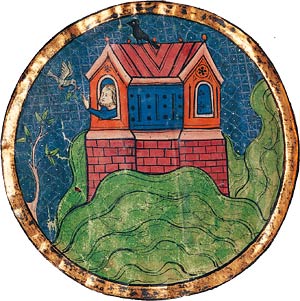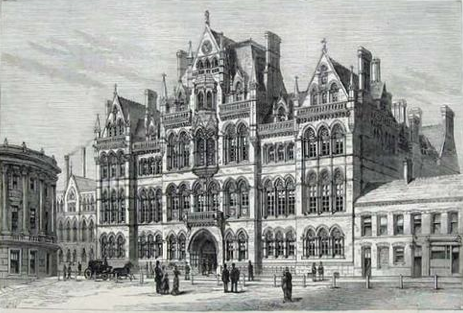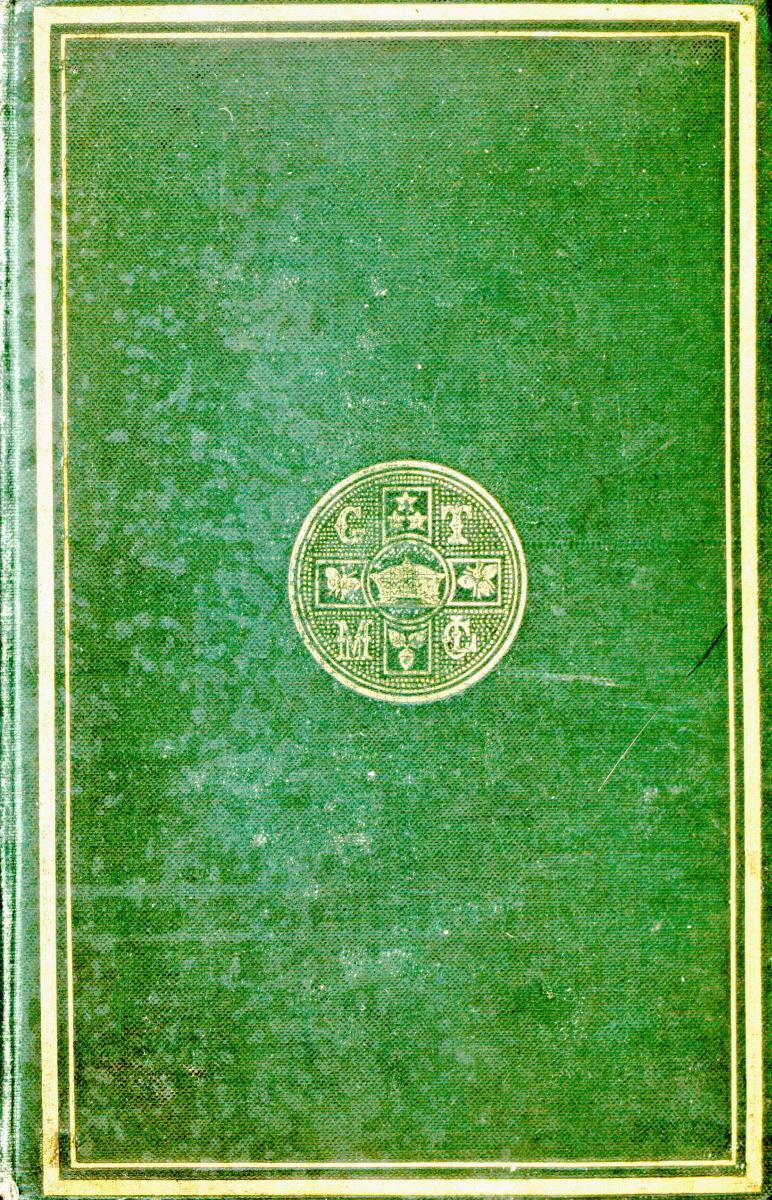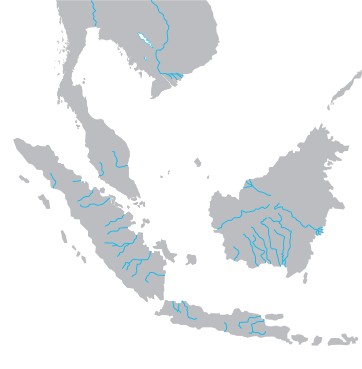|
Anthologies
In book publishing, an anthology is a collection of literary works chosen by the compiler; it may be a collection of plays, poems, short stories, songs, or related fiction/non-fiction excerpts by different authors. There are also thematic and genre-based anthologies.Chris Baldrick''The Oxford Dictionary of Literary Terms'' 3rd. ed (2008) Complete collections of works are often called " complete works" or "" (Latin equivalent). Etymology The word entered the English language in the 17th century, from the Greek word, ἀνθολογία (''anthologic'', literally "a collection of blossoms", from , ''ánthos'', flower), a reference to one of the earliest known anthologies, the ''Garland'' (, ''stéphanos''), the introduction to which compares each of its anthologized poets to a flower. That ''Garland'' by Meléagros of Gadara formed the kernel for what has become known as the Greek Anthology. ''Florilegium'', a Latin derivative for a collection of flowers, was used in medieval ... [...More Info...] [...Related Items...] OR: [Wikipedia] [Google] [Baidu] |
Miscellany
A miscellany (, ) is a collection of various pieces of writing by different authors. Meaning a mixture, medley, or assortment, a miscellany can include pieces on many subjects and in a variety of different forms. In contrast to anthologies, whose aim is to give a ''selective'' and '' canonical'' view of literature, miscellanies were produced for the entertainment of a contemporary audience and so instead emphasise ''collectiveness'' and ''popularity''. Laura Mandell and Rita Raley state: Manuscript miscellanies are important in the Middle Ages, and are the sources for most surviving shorter medieval vernacular poetry. Medieval miscellanies often include completely different types of text, mixing poetry with legal documents, recipes, music, medical and devotional literature and other types of text, and in medieval contexts a mixture of types of text is often taken as a necessary condition for describing a manuscript as a miscellany. They may have been written as a collection ... [...More Info...] [...Related Items...] OR: [Wikipedia] [Google] [Baidu] |
Edward Arber
Edward Arber (4 December 183623 November 1912) was an English scholar, writer, and editor. Background and professional work Arber was born in London. From 1854 he 1878 he worked as a clerk in the Admiralty, and began evening classes at King's College London in 1858. In 1870 his address was No. 5 Queen Square, in Bloomsbury.The Papers of Edward Alexander Newell Arber', Sedgwick Museum of Earth Sciences, University of Cambridge From 1878 to 1881 he studied English literature, under Henry Morley, at University College London; and from 1881 to 1894 he was professor of English at Mason College (which later became Birmingham University). From 1894 he lived in London as emeritus professor, being also a fellow of King's College London. In 1905 he received the honorary degree of D. Litt. from the University of Oxford. He married Marion Murray in 1869, and had two sons, one of whom, E. A. N. Arber, became demonstrator in palaeobotany at the University of Cambridge. Scholarly e ... [...More Info...] [...Related Items...] OR: [Wikipedia] [Google] [Baidu] |
Palgrave's Golden Treasury
The ''Golden Treasury of English Songs and Lyrics'' is a popular anthology of English poetry, originally selected for publication by Francis Turner Palgrave in 1861. It was considerably revised, with input from Alfred Tennyson, 1st Baron Tennyson, Alfred, Lord Tennyson, about three decades later. Palgrave excluded all poems by poets then still alive.Clare Bucknell. ''The Treasuries: Poetry Anthologies and the Making of British Culture'' (2023), Ch. 4, pp. 110-141 The book continues to be published in regular new editions; still under Palgrave's name. These reproduce Palgrave's selections and notes, but usually include a supplement of more recent poems. Christopher Ricks in 1991 produced a scholarly edition of the original ''Treasury'', along with an account of its evolution from 1861 to 1891, with inclusions and exclusions. Book I (Palgrave) William Alexander, 1st Earl of Stirling – Richard Barnefield – Thomas Campion – Samuel Daniel – Thomas Dekker (poet), Thomas Dekke ... [...More Info...] [...Related Items...] OR: [Wikipedia] [Google] [Baidu] |
William Oldys
William Oldys (14 July 1696 – 15 April 1761) was an English antiquarian and bibliographer. Life He was probably born in London, the illegitimate son of Dr William Oldys (1636–1708), chancellor of Lincoln diocese. His father had held the office of advocate of the admiralty, but lost it in 1693 because he would not prosecute as traitors and pirates the sailors who had served against England under James II. William Oldys, the younger, lost part of his small patrimony in the South Sea Bubble, and in 1724 went to Yorkshire, spending the greater part of the next six years as the guest of the Earl of Malton. On his return to London he found that his landlord had disposed of the books and papers left in his charge. Among these was an annotated copy of Gerard Langbaine's ''Dramatick Poets''. The book came into the hands of Thomas Coxeter, and subsequently into those of Theophilus Cibber, furnishing the basis of the ''Lives of the Poets'' (1753) published with Cibber's name on ... [...More Info...] [...Related Items...] OR: [Wikipedia] [Google] [Baidu] |
Commonplace Book
Commonplace books (or commonplaces) are a way to compile knowledge, usually by writing information into blank books. They have been kept from antiquity, and were kept particularly during the Renaissance and in the nineteenth century. Such books are similar to scrapbooks filled with items of many kinds: notes, proverbs, adages, aphorisms, maxims, quotes, letters, poems, tables of weights and measures, prayers, legal formulas, and recipes. Entries are most often organized under systematic subject headings and differ functionally from journals or diaries, which are chronological and introspective. Overview "Commonplace" is a translation of the Latin term ''locus communis'' (from Greek ''tópos koinós'', see literary topos) which means "a general or common place", such as a statement of proverbial wisdom. In this original sense, commonplace books were collections of such sayings, such as John Milton's example. "Commonplace book" is at times used with an expansive sense, refe ... [...More Info...] [...Related Items...] OR: [Wikipedia] [Google] [Baidu] |
Prose
Prose is language that follows the natural flow or rhythm of speech, ordinary grammatical structures, or, in writing, typical conventions and formatting. Thus, prose ranges from informal speaking to formal academic writing. Prose differs most notably from poetry, which follows some type of intentional, contrived, artistic structure. Poetic structures vary dramatically by language; in English poetry, language is often organized by a rhythmic metre and a rhyme scheme. The ordinary language of a region or community and many other forms and styles of language fall under prose, a label that can describe both speech and writing. In writing, prose is visually formatted differently than poetry. Poetry is traditionally written in verse: a series of lines on a page, parallel to the way that a person would highlight the structure orally if saying the poem aloud; for example, poetry may end with a rhyme at the end of each line, making the entire work more melodious or memorable. Pro ... [...More Info...] [...Related Items...] OR: [Wikipedia] [Google] [Baidu] |
Malay Language
Malay ( , ; , Jawi alphabet, Jawi: ) is an Austronesian languages, Austronesian language spoken primarily by Malays (ethnic group), Malays in several islands of Maritime Southeast Asia and the Malay Peninsula on the mainland Asia. The language is an official language of Brunei, Malaysia, and Singapore. Indonesian language, Indonesian, a standardized variety of Malay, is the official language of Indonesia and one of the working languages of East Timor. Malay is also spoken as a regional language of Malays (ethnic group), ethnic Malays in Indonesia and the Thai Malays, southern part of Thailand. Altogether, it is spoken by 60 million people across Maritime Southeast Asia. The language is pluricentric and a ISO 639 macrolanguage, macrolanguage, i.e., a group of Mutual intelligibility, mutually intelligible speech varieties, or dialect continuum, that have no traditional name in common, and which may be considered distinct languages by their speakers. Several varieties of it ar ... [...More Info...] [...Related Items...] OR: [Wikipedia] [Google] [Baidu] |
Malaysia
Malaysia is a country in Southeast Asia. Featuring the Tanjung Piai, southernmost point of continental Eurasia, it is a federation, federal constitutional monarchy consisting of States and federal territories of Malaysia, 13 states and three federal territories, separated by the South China Sea into two regions: Peninsular Malaysia on the Mainland Southeast Asia, Indochinese Peninsula and East Malaysia on the island of Borneo. Peninsular Malaysia shares land and maritime Malaysia–Thailand border, borders with Thailand, as well as maritime borders with Singapore, Vietnam, and Indonesia; East Malaysia shares land borders with Brunei and Indonesia, and a maritime border with the Philippines and Vietnam. Kuala Lumpur is the country's national capital, List of cities and towns in Malaysia by population, largest city, and the seat of the Parliament of Malaysia, legislative branch of the Government of Malaysia, federal government, while Putrajaya is the federal administrative capi ... [...More Info...] [...Related Items...] OR: [Wikipedia] [Google] [Baidu] |
Japan
Japan is an island country in East Asia. Located in the Pacific Ocean off the northeast coast of the Asia, Asian mainland, it is bordered on the west by the Sea of Japan and extends from the Sea of Okhotsk in the north to the East China Sea in the south. The Japanese archipelago consists of four major islands—Hokkaido, Honshu, Shikoku, and Kyushu—and List of islands of Japan, thousands of smaller islands, covering . Japan has a population of over 123 million as of 2025, making it the List of countries and dependencies by population, eleventh-most populous country. The capital of Japan and List of cities in Japan, its largest city is Tokyo; the Greater Tokyo Area is the List of largest cities, largest metropolitan area in the world, with more than 37 million inhabitants as of 2024. Japan is divided into 47 Prefectures of Japan, administrative prefectures and List of regions of Japan, eight traditional regions. About three-quarters of Geography of Japan, the countr ... [...More Info...] [...Related Items...] OR: [Wikipedia] [Google] [Baidu] |
Drama
Drama is the specific Mode (literature), mode of fiction Mimesis, represented in performance: a Play (theatre), play, opera, mime, ballet, etc., performed in a theatre, or on Radio drama, radio or television.Elam (1980, 98). Considered as a genre of poetry in general, the dramatic mode has been contrasted with the Epic poetry, epic and the Lyric poetry, lyrical modes ever since Aristotle's ''Poetics (Aristotle), Poetics'' ()—the earliest work of dramatic theory. The term "drama" comes from a Ancient Greek, Greek word meaning "deed" or "Action (philosophy), act" (Classical Greek: , ''drâma''), which is derived from "I do" (Classical Greek: , ''dráō''). The two masks associated with drama represent the traditional Genre, generic division between Comedy (drama), comedy and tragedy. In English (as was the analogous case in many other European languages), the word ''Play (theatre), play'' or ''game'' (translating the Old English, Anglo-Saxon ''pleġan'' or Latin ''ludus'') wa ... [...More Info...] [...Related Items...] OR: [Wikipedia] [Google] [Baidu] |
Pantun
''Pantun'' ( Jawi: ) is a Malayic oral poetic form used to express intricate ideas and emotions. It generally consists of an even number of lines and is based on ABAB rhyming schemes. The shortest consists of two lines, known as the in Malay, while the longest, the , can have 16 lines. is a disjunctive form of poetry that always comes in two parts: the first part is a prefatory statement called or which has no immediate logical or narrative connection with the second or closing statement called or . However, they are always connected by rhyme and other verbal associations, such as puns and repeating sounds. There is also an oblique but necessary relationship, and the first statement often serves as a metaphor for the second. The most popular forms of are the quatrain (four lines) and the couplet (two lines), which both feature prominently in literature and modern popular culture. The earliest literary records of date back to the 15th century Malacca Sultanate, althoug ... [...More Info...] [...Related Items...] OR: [Wikipedia] [Google] [Baidu] |
Waka (poetry)
is a type of poetry in classical Japanese literature. Although ''waka'' in modern Japanese is written as , in the past it was also written as (see Wa (Japan), Wa, an old name for Japan), and a variant name is . Etymology The word ''waka'' has two different but related meanings: the original meaning was "poetry in Japanese" and encompassed several genres such as ''chōka'' and ''sedōka'' (discussed below); the later, more common definition refers to poetry in a tanka, 5-7-5-7-7 metre. Up to and during the compilation of the in the eighth century, the word ''waka'' was a general term for poetry composed in Japanese, and included several genres such as , , and . However, by the time of the ''Kokinshūs compilation at the beginning of the tenth century, all of these forms except for the ''tanka'' and ''chōka'' had effectively gone extinct, and ''chōka'' had significantly diminished in prominence. As a result, the word ''waka'' became effectively synonymous with ''tanka'', and t ... [...More Info...] [...Related Items...] OR: [Wikipedia] [Google] [Baidu] |






